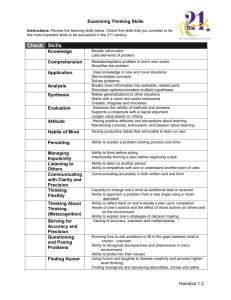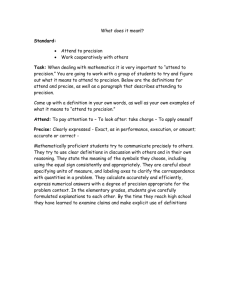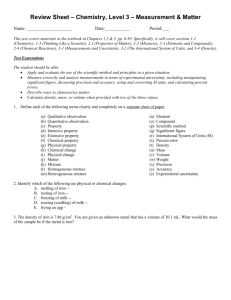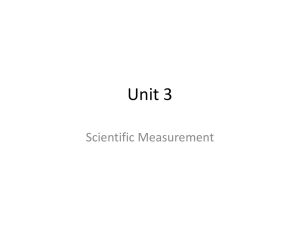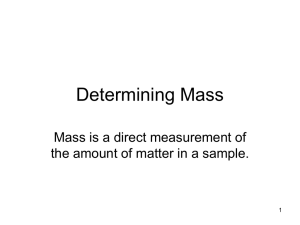4.1 Introduction
advertisement
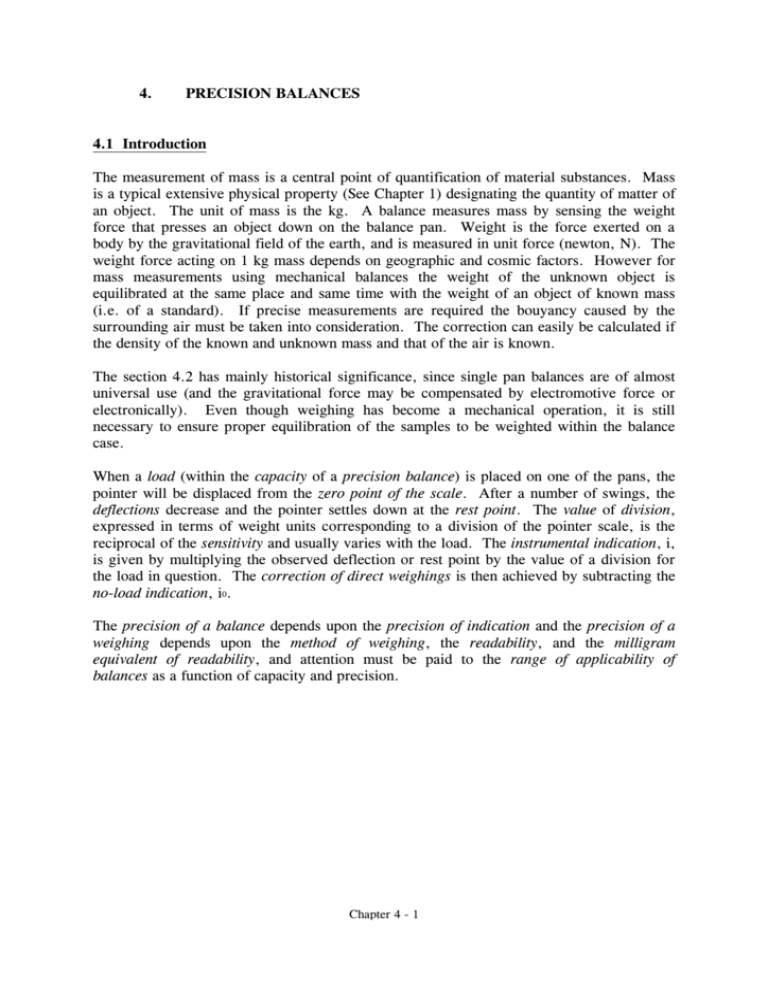
4. PRECISION BALANCES 4.1 Introduction The measurement of mass is a central point of quantification of material substances. Mass is a typical extensive physical property (See Chapter 1) designating the quantity of matter of an object. The unit of mass is the kg. A balance measures mass by sensing the weight force that presses an object down on the balance pan. Weight is the force exerted on a body by the gravitational field of the earth, and is measured in unit force (newton, N). The weight force acting on 1 kg mass depends on geographic and cosmic factors. However for mass measurements using mechanical balances the weight of the unknown object is equilibrated at the same place and same time with the weight of an object of known mass (i.e. of a standard). If precise measurements are required the bouyancy caused by the surrounding air must be taken into consideration. The correction can easily be calculated if the density of the known and unknown mass and that of the air is known. The section 4.2 has mainly historical significance, since single pan balances are of almost universal use (and the gravitational force may be compensated by electromotive force or electronically). Even though weighing has become a mechanical operation, it is still necessary to ensure proper equilibration of the samples to be weighted within the balance case. When a load (within the capacity of a precision balance) is placed on one of the pans, the pointer will be displaced from the zero point of the scale. After a number of swings, the deflections decrease and the pointer settles down at the rest point. The value of division, expressed in terms of weight units corresponding to a division of the pointer scale, is the reciprocal of the sensitivity and usually varies with the load. The instrumental indication, i, is given by multiplying the observed deflection or rest point by the value of a division for the load in question. The correction of direct weighings is then achieved by subtracting the no-load indication, i0. The precision of a balance depends upon the precision of indication and the precision of a weighing depends upon the method of weighing, the readability, and the milligram equivalent of readability, and attention must be paid to the range of applicability of balances as a function of capacity and precision. Chapter 4 - 1



